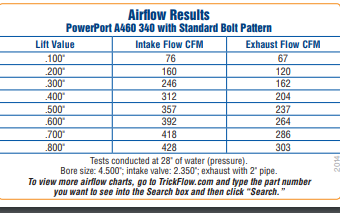http://garage.grumpysperformance.co...-related-engine-build-links.13190/#post-69931
this was a rather realistic video, now I doubt you could duplicate the project without spending a bit more money, but still it gave impressive results for the cash spent
Ford Production 429/460 Block Differences
The most common available production cast iron block casting numbers are C8VE-B, C9VE-B, D0VE-A, D1VE-(various suffix) and D9TE-AB.
We refer to all but the D9TE-AB as the "early-style" blocks. The D9TE casting arrived in the 1979 model year and was utilized until the end of 460 production.
For the most part, all production blocks and rotating asemblies are interchangable between all the early style blocks and except for the D9TE. A D9TE block's rotating assembly will fit into an early-style block, but the opposite is not true (some clearancing is required).
All 429/460 Fords are internally balanced engines except for the D9TE 460, which has an externally balanced rotating assembly (1979 & up 460's are externally balanced).
These block identifying marks (C9VE, D1VE, etc.) are not actual casting numbers but are engineering revisions that are cast into the block castings themselves. And they are what we enthusiasts refer to when identifying our factory iron, as they give not so much the year that the block was made but rather the revision of the block as specified by said engineering revision. (Actual date code is in the lifter valley.)
Early-Style Blocks: For the most part (and with small exception), the C8VE, C9VE and D1VE blocks are all essentially the same configuration casting with the thinner main webs. The thicker main web block is the D0VE block, which may or may not have 4-bolt main caps on 2,3 & 4. (Very few D1VE blocks may be thick webbed.) All Ford production 385 blocks can be decked as needed, so the slight variation in deck height (give or take .020" over the years) is a negligible detail.
D9TE Blocks: The externally balanced rotating assembly utilizes a crankshaft that has slightly smaller counterweights. This apparently was done to so that the cylinders of the D9TE block could be extended about .200" deeper towards the crankcase. It is believed that the cylinders were lengthened in the D9TE block because this block was revised to double as a big equipment truck block, and the dump truck rotating assemblies consisted of a very deep skirt piston that benefitted from the newly extended cylinder walls for support.
The deeper cylinders of the D9TE blocks are the reason that the early-style, internally balanced rotating assemblies will not fit (internal balance crank throws will not clear D9TE block's webbing as machined).
Since most prefer to use internally balanced rotating asembies in the performance applicaton, enthusiasts have usually opted for any block except the D9TE. There are also advantages to specific blocks within the group of early-style blocks, such as the D0VE-A's thick main webs, a slightly shorter deck height without decking, etc.
Further, for years the D9TE block was presumed to be a lightweight ("late model") casting and therefore not very strong and also limited in it's overbore capability. But this belief is currently being re-evaluated for a couple of reasons:
- No-one had yet evaluated D9TE cylinder wall thickness with a sonic checker, and preliminary testing suggests the block may not be so bad afterall.
- Strokers have become popular and the D9TE's deeper cylinders offer more support for the increased-stroke rotating assemlies.
- Most all aftermarket stroker kits use a crank with the dimensions of the externally balanced crank and so they fit the D9TE block as well as the early blocks.




Last edited:

